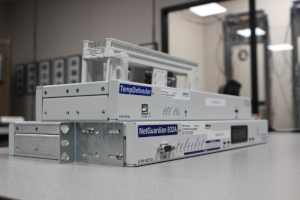Check out our White Paper Series!
A complete library of helpful advice and survival guides for every aspect of system monitoring and control.
1-800-693-0351
Have a specific question? Ask our team of expert engineers and get a specific answer!
Sign up for the next DPS Factory Training!

Whether you're new to our equipment or you've used it for years, DPS factory training is the best way to get more from your monitoring.
Reserve Your Seat TodayYour tower lights are a lifeline.
They protect aircrafts from collisions and they protect your company from federal fines. Plus, they can protect your career from a preventable outage that lands on your desk.
But the truth is: most tower operators still aren't doing enough to monitor them.
If that's you, you're not able to prevent the same issues that a more capable (and better-monitored) system can.
Let's fix that before it costs you.
Tower lighting is never optional. It's federally mandated by the Federal Communications Commission (FCC) and the Federal Aviation Administration (FAA).
According to FCC Part 17.47, any registered antenna structure must have its lights observed at least once every 24 hours. You have two options:
And that's only the start.
If your lights do fail, you're legally required to report it immediately - and absolutely within 30 minutes. That doesn't mean when your technician finally arrives at the site, or at some point tomorrow morning when someone checks the log. These outages must truly be reported immediately.
If you don't, you're risking:
You might be thinking:
"We've been fine for years using scheduled site checks."
Today, tower networks are larger, more remote, and more regulated than ever. You simply can't afford to miss a light outage - or delay your response.
Most older systems fail when there's:
All of this adds up to a dangerously fragile setup.
Suppose a lightning storm knocks out your tower light at 2:13 am. Within 10 seconds, you should get a text message and email. The message should say something like:
"A tower lighting problem has occurred.
Call the FAA IMMEDIATELY at 1-800-555-4262.
Latitude: 36.3N
Longitude: 119.6W
Height: 160'
Elevation: 1585'"
That way, you forward the message to the FAA and log the call - all within 30 seconds of the event.
That's real-time compliance and job security in action. And that's what the right monitoring setup does for you.
Now that we've looked at what's at stake, let's break down the non-negotiable features your monitoring gear must have.
If your system doesn't check every one of these boxes, it's time to upgrade.
Alarms must reach you wherever you are - whether you're on site, in your truck, or at home.
Look for systems that can:
Anything less is just not good enough.
Remote tower sites often live in the middle of nowhere.
That's why your RTU should:
You can't depend on internet alone in rugged telecom territory.
Storms knock out power, and that's usually when your tower lights fail. If your monitoring system goes dark with the site, you lose visibility.
Choose RTUs with:
This way, your alarms keep flowing even when the commercial power grid fails.
The best monitoring system doesn't need bloated desktop software (or any software at all).
Look for gear that gives you:
You should be able to log in from your laptop, tablet, or even your phone.
This is where things go from "helpful" to "life-saving."
Your monitoring system should send fully detailed alerts with:
This makes sure your team reacts fast and stays compliant - automatically.
What if you have dozens (or hundreds!) of tower sites?
Monitoring becomes a nightmare if each site runs independently. You need centralized visibility.
That's where a master station like T/Mon comes in.
T/Mon pulls alarms from all sites into one intuitive interface. Features include:
Now you've got one screen to see and manage your entire network.
We've spent over 35 years building rugged, reliable monitoring equipment for telcos, utilities, railroads, and government agencies.
We're not a startup, and we're not dabbling. This is all we do.
Our flagship solution for tower light monitoring utilizes NetGuardian RTUs from the NetGuardian G6 Series.
These RTUs deliver:
Built for 24/7 mission-critical sites, the G6 line is:
It's the remote you install once, and it runs for years - quietly doing its job until something goes wrong.
Still unsure what gear you need? That's what we're here for.
Call us directly at 1-800-693-0351 or email sales@dpstele.com.
We'll walk you through:
We'll even send you a custom proposal that lays everything out, so you can share it with your team or purchasing department.
You've got enough on your plate. Let us simplify this for you.

Andrew Erickson
Andrew Erickson is an Application Engineer at DPS Telecom, a manufacturer of semi-custom remote alarm monitoring systems based in Fresno, California. Andrew brings more than 18 years of experience building site monitoring solutions, developing intuitive user interfaces and documentation, and opt...